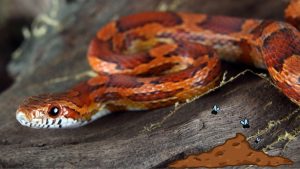Bearded dragons are popular reptile pets among both novice and experienced reptile enthusiasts. Whether you have one bearded dragon or several, if you have a female in your care, there is a possibility that she may lay eggs at some point. Here’s what you need to know about the process and how to handle it.
Behaviors of Bearded Dragons
Can a Bearded Dragon Lay Eggs Even If It Lives Alone? Yes, even a female bearded dragon that lives alone can lay eggs. This can occur if she has recently been in contact with a male bearded dragon, or it can simply be a natural occurrence where females lay infertile eggs without any male involvement. Chickens are a good example of animals that regularly lay infertile eggs.
Nesting Behavior of Bearded Dragons
When a female bearded dragon is preparing to lay eggs, she may exhibit more lethargic behavior than usual, spending increased time sleeping or resting under the heat lamp. The belly of the bearded dragon will appear larger than usual as it fills with eggs. As the eggs develop, they will become visible from the outside, appearing like marbles within the bearded dragon’s body, and can be felt.
A gravid bearded dragon is one that has eggs yet to be laid. After approximately three weeks, a gravid bearded dragon will begin digging in her enclosure, displaying nesting behavior. At this point, it is important to provide a suitable nesting area for your bearded dragon. Prepare a small container as a nest box, filling it with clean, moist bedding where the eggs can be buried. There are various reptile dirt or vermiculite bedding options available for this purpose.
Place the nest box inside your bearded dragon’s enclosure under the heat lamps, allowing her to dig in it. Some people prefer to use separate containers, such as plastic storage bins, for their bearded dragons to lay eggs in. This allows for better temperature control by placing the container in an incubator or adjusting the environment. If you choose this option, ensure that the bedding is preheated and moistened before your bearded dragon lays her eggs.
Bearded dragons typically lay clutches of about 20 eggs at a time, and they can lay multiple clutches during a four-month season (although some have been known to lay as many as five). Be prepared to provide your gravid bearded dragon with extra calcium and more food than usual until she lays all the eggs. This applies to all gravid females, regardless of whether the eggs are fertile or not.
Issues with Bearded Dragons Laying Eggs
If a bearded dragon retains eggs for over 45 days, it may be experiencing egg binding, a serious condition. If you notice eggs inside your bearded dragon for more than a month, she hasn’t laid any, and she is lethargic and sleeping excessively, it is crucial to seek veterinary assistance promptly. The eggs may need to be removed, potentially through surgical intervention, and your bearded dragon’s low calcium levels may require treatment. Egg binding is a life-threatening condition that should not be ignored.
Incubation and Care of Bearded Dragon Eggs
Once the eggs are buried in the moistened bedding, maintain the soil temperature between 80 and 85 degrees Fahrenheit using heat lamps or an under tank heater. Keep the humidity at around 75 percent by regularly misting the soil (avoid directly misting the eggs to prevent mold growth). Fertile eggs will take approximately 55 to 75 days to hatch. If the eggs are infertile, they will not hatch and can be disposed of at any point.
If you are uncertain about the fertility of the eggs, you can perform a process called candling. Hold a flashlight up to the egg to look for a pinkish embryo inside. However, avoid excessive handling of fertile eggs as it can harm the developing bearded dragon. Wait at least a few days after the egg is laid before candling or rotating it to prevent detachment of the embryo.
Caring for fertile eggs can be challenging and requires careful monitoring of temperature and humidity to avoid issues such as mold growth. Many breeders use incubators and uncover the eggs from the soil for better visibility. If you choose to keep the eggs buried, minimize unnecessary disturbance as moving them daily can be detrimental. If you don’t have an incubator, use a thermometer and hygrometer placed in the nest with the eggs and patiently wait for the hatching period.
During the incubation period, it’s important to regularly check the eggs for any signs of mold or other issues. If you notice any abnormalities, it’s advisable to consult with a reptile veterinarian or experienced breeder for guidance.
As the hatching time approaches, you’ll need to prepare for the emergence of the baby bearded dragons, known as hatchlings. Create a suitable enclosure with appropriate heat and lighting conditions to accommodate the newborns. It’s crucial to provide a safe and comfortable environment to support their initial growth and development.
Once the hatchlings have fully emerged from their eggs, refrain from handling them immediately. Allow them some time to adjust and absorb their yolk sacs, which provide vital nutrients during their early stages. It’s essential to provide them with proper nutrition, including small-sized live insects and finely chopped vegetables appropriate for their size.
Remember to maintain proper temperature and humidity levels in the hatchling enclosure, as these factors greatly influence their health and overall well-being. Regularly monitor their behavior, feeding patterns, and growth to ensure they are thriving.
If you encounter any difficulties or concerns during the incubation or early stages of the hatchlings’ lives, seeking advice from a reptile expert or veterinarian experienced in bearded dragon care is highly recommended.
Caring for bearded dragon eggs and witnessing the hatching of these fascinating reptiles can be a rewarding experience. With proper knowledge, preparation, and attentive care, you can support the successful reproduction and growth of your bearded dragons.
Author
-

Lawrence, the founder of Pet Ploy, established the website in mid-2023. With a lifelong love for pets, Lawrence has been surrounded by a variety of animals since his early years. From dogs and cats to guinea pigs, rabbits, fish, and more, he has experienced the joy of caring for a diverse range of pets. Drawing from his deep-rooted passion, Lawrence created Pet Ploy to share his knowledge and enthusiasm with fellow pet enthusiasts. Through the platform, he aims to provide valuable insights, tips, and resources to promote the well-being and happiness of pets everywhere.











